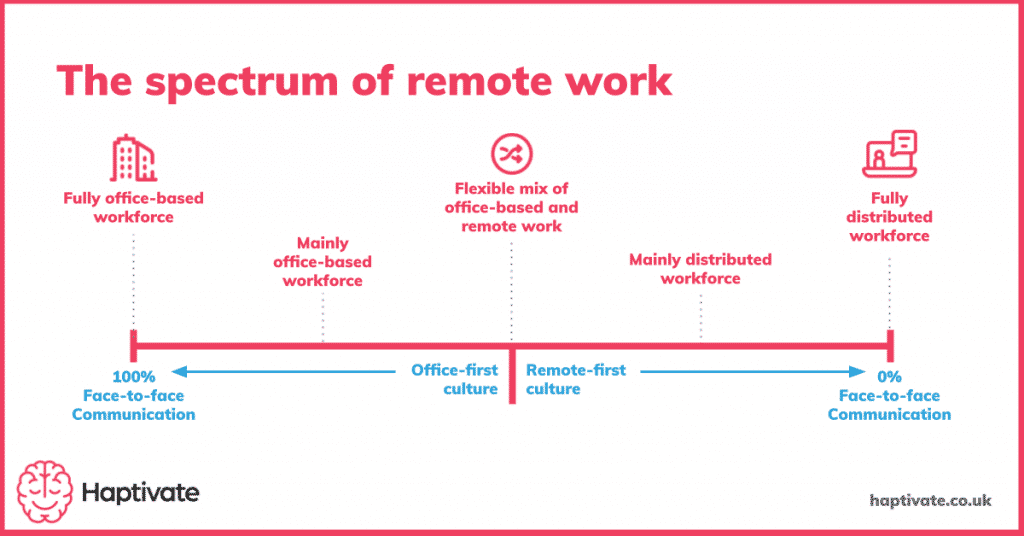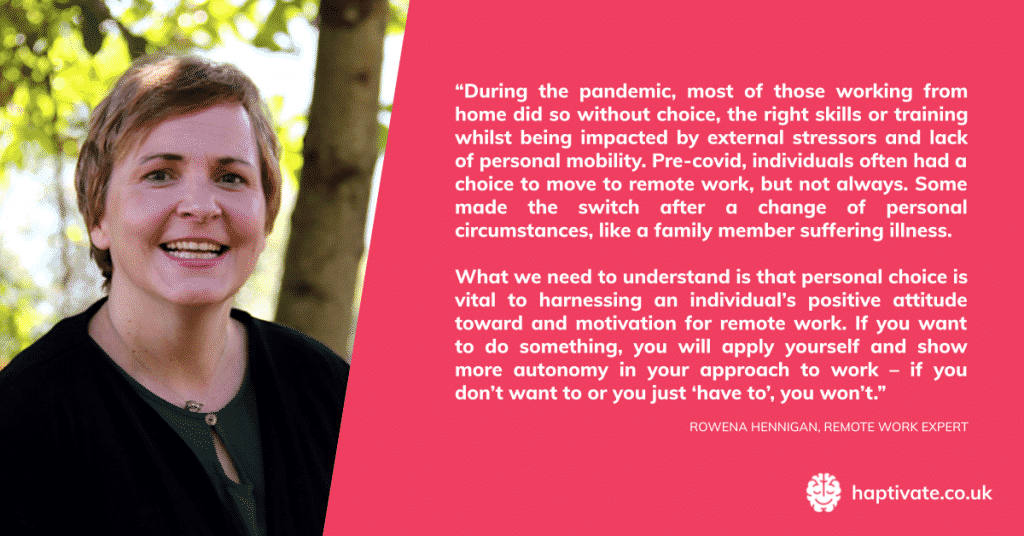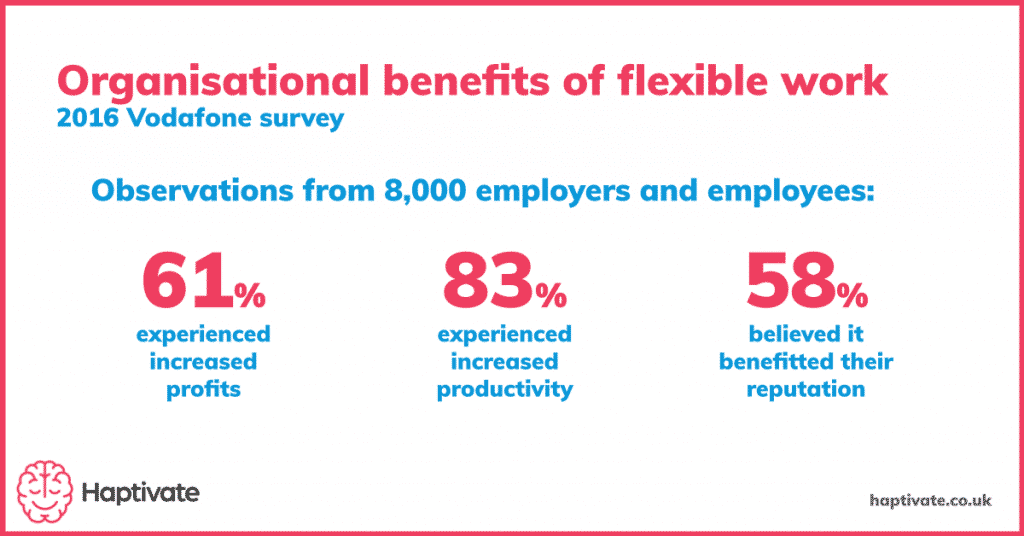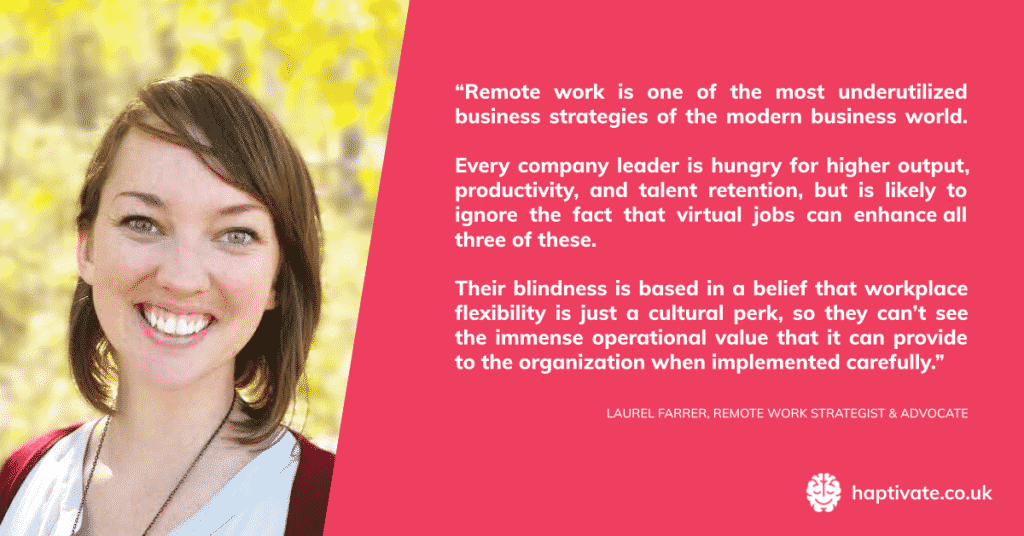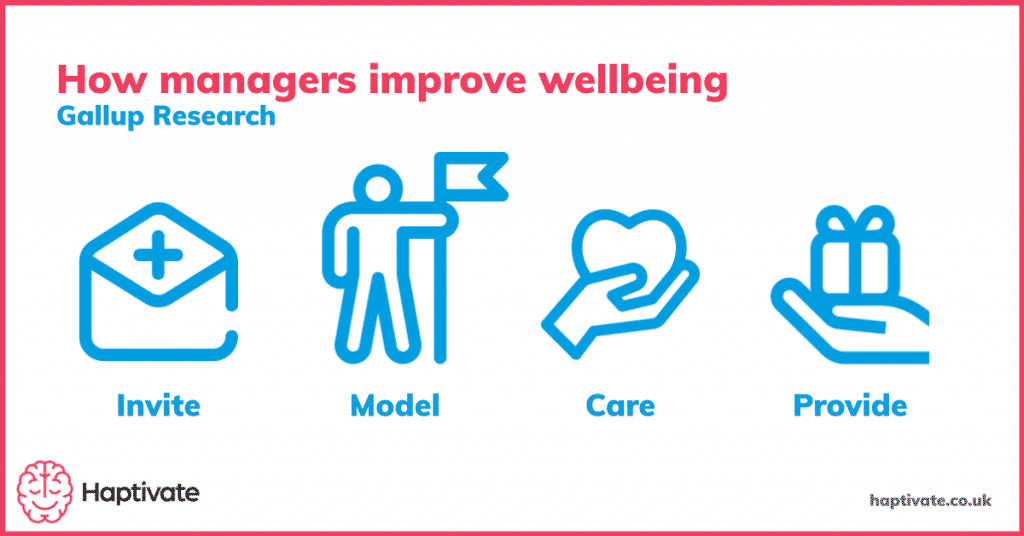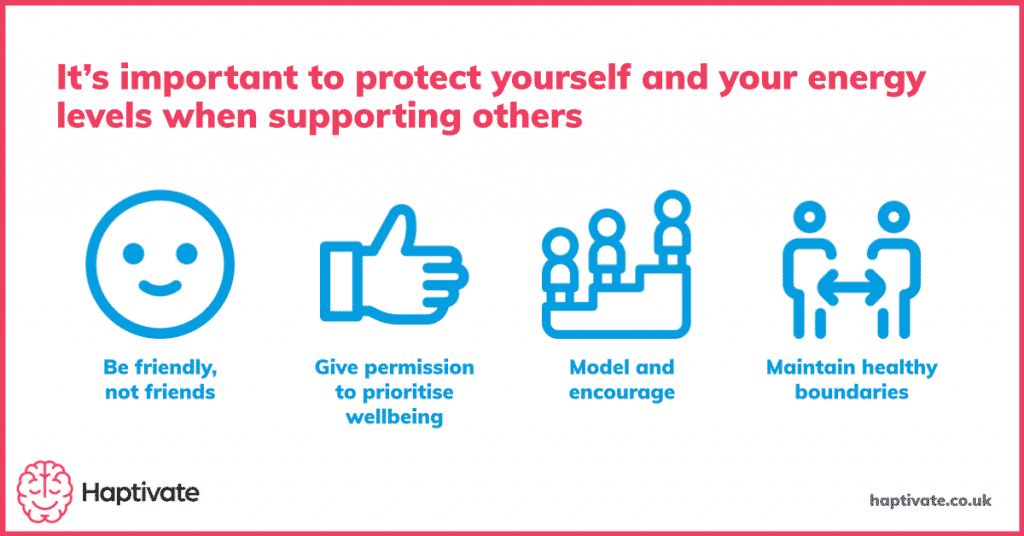- Coronavirus and homeworking in the UK labour market: 2019 [Internet]. ONS.gov. 2020 [cited 2021 Feb 27]. Available from: https://www.ons.gov.uk/employmentandlabourmarket/peopleinwork/employmentandemployeetypes/articles/coronavirusandhomeworkingintheuklabourmarket/2019
- Cioca L. Developing Effective Virtual Teams: Lessons From Research [Internet]. CIPD; 2020 [cited 2020 Jan 14]. Available from: https://www.cipd.co.uk/Images/developing-virtual-teams-1_tcm18-76431.pdf
- Felstead A, Henseke G. Assessing the growth of remote working and its consequences for effort, well-being and work-life balance. New Technol Work Employ. 2017 Nov 1;32(3):195–212.
- State of Remote Work 2019 [Internet]. buffer.com. 2020 [cited 2021 Feb 27]. Available from: https://buffer.com/state-of-remote-work-2019
- Iqbal S, Suh J, Czerwinski M, Mark G, Teevan J. Remote Work and Well-being. Microsoft [Internet]. 2020 Jul 6 [cited 2021 Jan 14]; Available from: https://www.microsoft.com/en-us/research/publication/remote-work-and-well-being/
- Joyce K, Pabayo R, Critchley JA, Bambra C. Flexible working conditions and their effects on employee health and wellbeing. Cochrane Database Syst Rev. 2010;(2).
- Bloom N. To raise productivity, let more employees work from home. Harv Bus Rev. 2014;92(1/2):28–9.
- Cross R, Rebele R, Grant A. Collaborative Overload. Harvard Business Review [Internet]. 2016 Jan 1 [cited 2021 Jan 18]; Available from: https://hbr.org/2016/01/collaborative-overload
- Cross R, Rebele R, Grant A. Collaborative Overload. Harvard Business Review [Internet]. 2016 Jan 1 [cited 2021 Jan 18]; Available from: https://hbr.org/2016/01/collaborative-overload
- Cross R, Rebele R, Grant A. Collaborative Overload. Harvard Business Review [Internet]. 2016 Jan 1 [cited 2021 Jan 18]; Available from: https://hbr.org/2016/01/collaborative-overload
- Schall MA. The relationship between remote work and job satisfaction: The mediating roles of perceived autonomy, work-family conflict, and telecommuting intensity. 2019
- Schall MA. The relationship between remote work and job satisfaction: The mediating roles of perceived autonomy, work-family conflict, and telecommuting intensity. 2019
- Moss J. Unlocking Happiness at Work: How a Data-driven Happiness Strategy Fuels Purpose, Passion and Performance. Kogan Page Publishers; 2016.
- Bellmann L, Hübler O. Working from home, job satisfaction and work–life balance–robust or heterogeneous links? Int J Manpow. 2020
- Johannsen R, Zak PJ. Autonomy Raises Productivity: An Experiment Measuring Neurophysiology. Front Psychol. 2020;11:963.
- Farrer L. 5 Proven Benefits Of Remote Work For Companies [Internet]. Forbes. 2020 [cited 2021 Jan 25]. Available from: https://www.forbes.com/sites/laurelfarrer/2020/02/12/top-5-benefits-of-remote-work-for-companies/
- Hewlett SA, Marshall M, Sherbin L. How diversity can drive innovation. Harv Bus Rev. 2013;91(12):30–30.
- Bloom N. To raise productivity, let more employees work from home. Harv Bus Rev. 2014;92(1/2):28–9
- Vodaphone Global Survey Reveals Rapid Adoption Of Flexible Working [Internet]. Vodafone UK News Centre. 2016 [cited 2021 Jan 25]. Available from: https://newscentre.vodafone.co.uk/press-release/974/
- Farrer L. 5 Proven Benefits Of Remote Work For Companies [Internet]. Forbes. 2020 [cited 2021 Jan 25]. Available from: https://www.forbes.com/sites/laurelfarrer/2020/02/12/top-5-benefits-of-remote-work-for-companies/
- Bloom N. To raise productivity, let more employees work from home. Harv Bus Rev. 2014;92(1/2):28–9.
- Schall MA. The relationship between remote work and job satisfaction: The mediating roles of perceived autonomy, work-family conflict, and telecommuting intensity. 2019
- Sklar J. ‘Zoom fatigue’ is taxing the brain. Here’s why that happens. [Internet]. National Geographic. 2020 [cited 2020 Dec 16]. Available from: https://www.nationalgeographic.com/science/2020/04/coronavirus-zoom-fatigue-is-taxing-the-brain-here-is-why-that-happens/
- Center for History and New Media. Zotero Quick Start Guide [Internet]. Available from: http://zotero.org/support/quick_start_guide
- Fosslien L, West Duffy M. How to Combat Zoom Fatigue. Harvard Business Review [Internet]. 2020 Apr 29 [cited 2021 Jan 27]; Available from: https://hbr.org/2020/04/how-to-combat-zoom-fatigue
- Cioca L. Developing Effective Virtual Teams: Lessons From Research [Internet]. CIPD; 2020 [cited 2020 Jan 14]. Available from: https://www.cipd.co.uk/Images/developing-virtual-teams-1_tcm18-76431.pdf
- Baltes BB, Dickson MW, Sherman MP, Bauer CC, LaGanke JS. Computer-mediated communication and group decision making: A meta-analysis. Organ Behav Hum Decis Process. 2002;87(1):156–79.
- De Guinea AO, Webster J, Staples DS. A meta-analysis of the consequences of virtualness on team functioning. Inf Manage. 2012;49(6):301–8.
- Bachrach DG, Lewis K, Kim Y, Patel PC, Campion MC, Thatcher S. Transactive memory systems in context: A meta-analytic examination of contextual factors in transactive memory systems development and team performance. J Appl Psychol. 2019;104(3):464.
- Yoo Y, Kanawattanachai P. Developments of transactive memory systems and collective mind in virtual teams. Int J Organ Anal. 2001
- State of Remote Work 2019 [Internet]. buffer.com. 2020 [cited 2021 Feb 27]. Available from: https://buffer.com/state-of-remote-work-2019
- State of Remote Work 2020 [Internet]. buffer.com. [cited 2021 Feb 27]. Available from: https://lp.buffer.com/state-of-remote-work-2020
- De Guinea AO, Webster J, Staples DS. A meta-analysis of the consequences of virtualness on team functioning. Inf Manage. 2012;49(6):301–8
- Cioca L. Developing Effective Virtual Teams: Lessons From Research [Internet]. CIPD; 2020 [cited 2020 Jan 14]. Available from: https://www.cipd.co.uk/Images/developing-virtual-teams-1_tcm18-76431.pdf
- Grenny J, Maxfield D. A Study of 1,100 Employees Found That Remote Workers Feel Shunned and Left Out [Internet]. Harvard Business Review. 2017 [cited 2021 Feb 27]. Available from: https://hbr.org/2017/11/a-study-of-1100-employees-found-that-remote-workers-feel-shunned-and-left-out
- Dan Schawbel. Survey: Remote Workers Are More Disengaged and More Likely to Quit. Harvard Business Review [Internet]. 2018 Nov 15 [cited 2021 Jan 28]; Available from: https://hbr.org/2018/11/survey-remote-workers-are-more-disengaged-and-more-likely-to-quit
- Inc G. The Emotional State of Remote Workers: It’s Complicated [Internet]. Gallup.com. 2020 [cited 2021 Jan 25]. Available from: https://www.gallup.com/workplace/327569/emotional-state-remote-workers-complicated.aspx
- Böckerman P, Ilmakunnas P. The job satisfaction-productivity nexus: A study using matched survey and register data. ILR Rev. 2012;65(2):244–62.
- Coo C, Salanova M. Mindfulness can make you happy-and-productive: A mindfulness controlled trial and its effects on happiness, work engagement and performance. J Happiness Stud. 2018;19(6):1691–711
- De Guinea AO, Webster J, Staples DS. A meta-analysis of the consequences of virtualness on team functioning. Inf Manage. 2012;49(6):301–8
- Mann A, Harter J. The worldwide employee engagement crisis. Gallup Bus J. 2016;7:1–5
- Hickman A. How to Build Trust and Boost Productivity Within Remote Teams [Internet]. Gallup.com. 2020 [cited 2021 Feb 27]. Available from: https://www.gallup.com/workplace/316931/build-trust-boost-productivity-within-remote-teams.aspx
- Moss J. Helping Remote Workers Avoid Loneliness and Burnout. Harvard Business Review [Internet]. 2018 Nov 30 [cited 2021 Feb 12]; Available from: https://hbr.org/2018/11/helping-remote-workers-avoid-loneliness-and-burnout
- Moss J. Helping Remote Workers Avoid Loneliness and Burnout. Harvard Business Review [Internet]. 2018 Nov 30 [cited 2021 Feb 12]; Available from: https://hbr.org/2018/11/helping-remote-workers-avoid-loneliness-and-burnout
- Nahrgang JD, Morgeson FP, Hofmann DA. Safety at work: A meta-analytic investigation of the link between job demands, job resources, burnout, engagement, and safety outcomes. J Appl Psychol. 2011;96(1):71–94
- Improving well-being decreases burnout and turnover [Internet]. consultancy.uk. 2020 [cited 2020 Nov 4]. Available from: https://www.consultancy.uk/news/23404/improving-well-being-decreases-burnout-and-turnover
- Beck R. Managers Account for 70% of Variance in Employee Engagement [Internet]. Gallup.com. 2015 [cited 2021 Feb 27]. Available from: https://news.gallup.com/businessjournal/182792/managers-account-variance-employee-engagement.aspx
- Cioca L. Developing Effective Virtual Teams: Lessons From Research [Internet]. CIPD; 2020 [cited 2020 Jan 14]. Available from: https://www.cipd.co.uk/Images/developing-virtual-teams-1_tcm18-76431.pdf
- Gifford J. CIPD Good Work Index 2020 Summary Report: UK Working Lives Survey [Internet]. 2020 [cited 2020 Nov 4]. Available from: https://www.cipd.co.uk/Images/good-work-index-summary-report-2020-1_tcm18-79211.pdf
- Jaakson K, Reino A, McClenaghan PB. The space between–linking trust with individual and team performance in virtual teams. Team Perform Manag Int J. 2019
- Grant CA, Wallace LM, Spurgeon PC. An exploration of the psychological factors affecting remote e‐worker’s job effectiveness, well‐being and work‐life balance. Empl Relat. 2013
- Breuer C, Hüffmeier J, Hertel G. Does trust matter more in virtual teams? A meta-analysis of trust and team effectiveness considering virtuality and documentation as moderators. J Appl Psychol. 2016;101(8):1151
- Camilleri V. The Best Way to Develop Managers [Internet]. Gallup.com. 2020 [cited 2021 Feb 27]. Available from: https://www.gallup.com/cliftonstrengths/en/327803/best-develop-managers.aspx
- K. Parket S, Knight C, Keller A. Remote Managers Are Having Trust Issues. Harvard Business Review [Internet]. 2020 Jul 30 [cited 2021 Jan 28]; Available from: https://hbr.org/2020/07/remote-managers-are-having-trust-issues
- Duhigg C. What Google Learned From Its Quest to Build the Perfect Team - The New York Times [Internet]. 2016 [cited 2020 Nov 4]. Available from: https://www.nytimes.com/2016/02/28/magazine/what-google-learned-from-its-quest-to-build-the-perfect-team.html
- Frazier ML, Fainshmidt S, Klinger RL, Pezeshkan A, Vracheva V. Psychological safety: A meta‐analytic review and extension. Pers Psychol. 2017;70(1):113–65.
- Swain JE. Effects of leader humility on the performance of virtual groups. J Leadersh Stud. 2018;12(1):21–37
- Swain JE. Effects of leader humility on the performance of virtual groups. J Leadersh Stud. 2018;12(1):21–37
- Grenny J, Maxfield D. A Study of 1,100 Employees Found That Remote Workers Feel Shunned and Left Out [Internet]. Harvard Business Review. 2017 [cited 2021 Feb 27]. Available from: https://hbr.org/2017/11/a-study-of-1100-employees-found-that-remote-workers-feel-shunned-and-left-out
- Sklar J. ‘Zoom fatigue’ is taxing the brain. Here’s why that happens. [Internet]. National Geographic. 2020 [cited 2020 Dec 16]. Available from: https://www.nationalgeographic.com/science/2020/04/coronavirus-zoom-fatigue-is-taxing-the-brain-here-is-why-that-happens/
- Fosslien L, West Duffy M. How to Combat Zoom Fatigue. Harvard Business Review [Internet]. 2020 Apr 29 [cited 2021 Jan 27]; Available from: https://hbr.org/2020/04/how-to-combat-zoom-fatigue
- Anticipatory Anxiety [Internet]. Anxiety UK. [cited 2021 Feb 27]. Available from: https://www.anxietyuk.org.uk/anxiety-type/anticipatory-anxiety/
- French workers get ‘right to disconnect’ from emails out of hours [Internet]. BBC News. 2016 [cited 2021 Feb 27]. Available from: https://www.bbc.com/news/world-europe-38479439
- Palumbo R, Manna R, Cavallone M. Beware of side effects on quality! Investigating the implications of home working on work-life balance in educational services. TQM J. 2020
- Fosslien L, West Duffy M. How to Combat Zoom Fatigue. Harvard Business Review [Internet]. 2020 Apr 29 [cited 2021 Jan 27]; Available from: https://hbr.org/2020/04/how-to-combat-zoom-fatigue
- implications of home working on work-life balance in educational services. TQM J. 2020;
47. Walther JB, Bunz U. The rules of virtual groups: Trust, liking, and performance in computer‐mediated communication. J Commun. 2005;55(4):828–46 - Bachrach DG, Lewis K, Kim Y, Patel PC, Campion MC, Thatcher S. Transactive memory systems in context: A meta-analytic examination of contextual factors in transactive memory systems development and team performance. J Appl Psychol. 2019;104(3):464
- Yoo Y, Kanawattanachai P. Developments of transactive memory systems and collective mind in virtual teams. Int J Organ Anal. 2001
- Cioca L. Developing Effective Virtual Teams: Lessons From Research [Internet]. CIPD; 2020 [cited 2020 Jan 14]. Available from: https://www.cipd.co.uk/Images/developing-virtual-teams-1_tcm18-76431.pdf
- Konradt U, Schippers MC, Garbers Y, Steenfatt C. Effects of guided reflexivity and team feedback on team performance improvement: The role of team regulatory processes and cognitive emergent states. Eur J Work Organ Psychol. 2015;24(5):777–95
- Kring JP. Communication modality and after action review performance in a distributed immersive virtual environment. 2004
- Frazier ML, Fainshmidt S, Klinger RL, Pezeshkan A, Vracheva V. Psychological safety: A meta‐analytic review and extension. Pers Psychol. 2017;70(1):113–65
- Cioca L. Developing Effective Virtual Teams: Lessons From Research [Internet]. CIPD; 2020 [cited 2020 Jan 14]. Available from: https://www.cipd.co.uk/Images/developing-virtual-teams-1_tcm18-76431.pdf
- Frazier ML, Fainshmidt S, Klinger RL, Pezeshkan A, Vracheva V. Psychological safety: A meta‐analytic review and extension. Pers Psychol. 2017;70(1):113–65
- Jennifer R. How to Create a Culture of Organizational Well-Being [Internet]. Gallup.com. 2013 [cited 2021 Feb 27]. Available from: https://news.gallup.com/businessjournal/159080/create-culture-organizational-wellbeing.aspx
- Beck R. Managers Account for 70% of Variance in Employee Engagement [Internet]. Gallup.com. 2015 [cited 2021 Feb 27]. Available from: https://news.gallup.com/businessjournal/182792/managers-account-variance-employee-engagement.aspx





